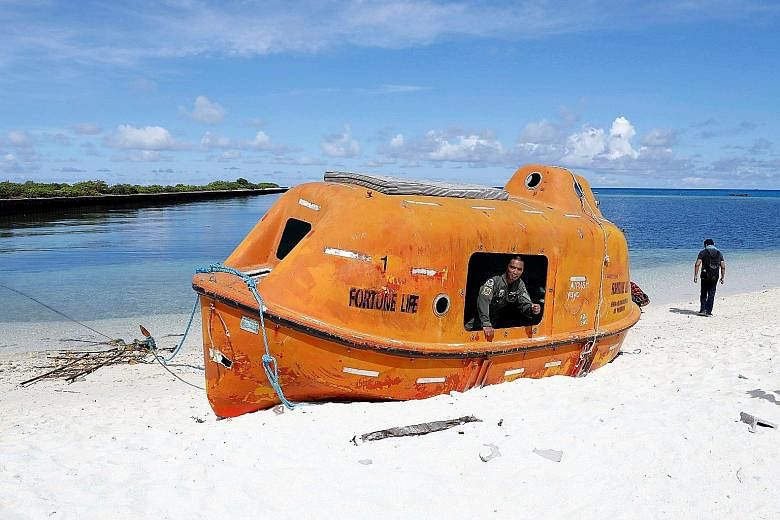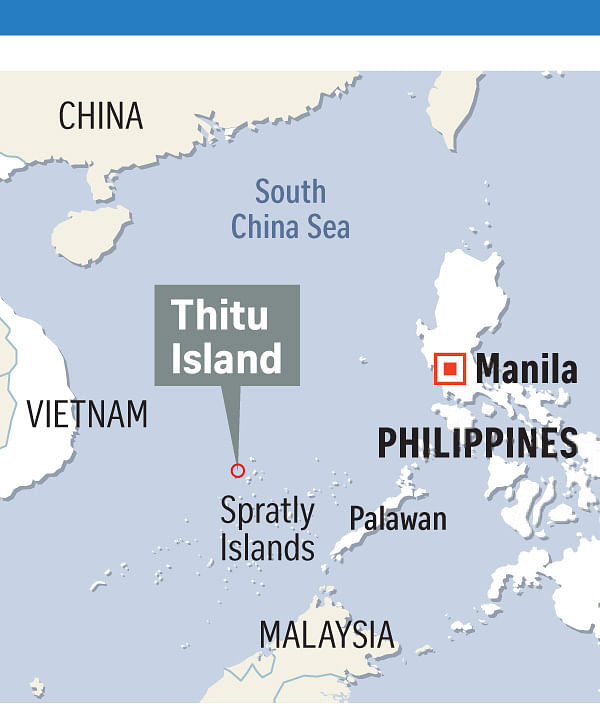With China leaning back, Manila is redoubling its efforts to transform Thitu, the biggest island the Philippines occupies in the South China Sea, into a tourism and marine research hub.
Officials say the Chinese have stopped harassing supply runs to the Philippines' outposts in the Spratly Islands chain since President Rodrigo Duterte visited China last October.
That allowed the Philippine navy to ship cement, wood and steel to Thitu last month, said Lieutenant-General Raul del Rosario, head of the military's Western Command.
Navy engineers were already on the island to refurbish the barracks used by a contingent of marines there and to build a sea ramp so that heavy equipment and more construction materials could be offloaded onto the island, he added.
"(The Chinese Coast Guard) is not circling the island any more," Mr Roberto del Mundo, mayor of a municipality of about 300 settlers on Thitu, told The Straits Times.
Since he took office last year, Mr Duterte has gone to great lengths to rebuild ties with Beijing, which have been strained by a case Manila filed, challenging China's claims to nearly all of the South China Sea. The Philippines won that case, but Mr Duterte has instead chosen to set aside the victory and seek billions worth of investments and grants from China.
The Philippine Defence Department has earmarked about 1.6 billion pesos (S$50 million) to repair and upgrade Thitu's 1.3km-long unpaved runway, and build a seaport on the island.
There are plans to extend the runway to 2.5km so that it can accommodate light commercial aircraft to fly in tourists. Lodges that can house up to 30 tourists each are also being planned, as well as marine research facilities.
The 32ha island is ringed with chalk-white beaches. Crystalline sea stretches as far as the eye can see, broken only by the silhouette of tall cranes, circular tanks and multi-storey buildings that China has been building on a sprawling island 45km away.
But Thitu's main draw is its isolation. It takes three days and three nights to reach it by boat from the resort island of Palawan 450km away. No tourists have ever been to Thitu.
The Philippines has eight other outposts in the Spratlys. There are two other islands circled by crushed coral beaches that tourists would find attractive. Even a derelict transport ship that the Philippine navy ran aground in 1999 on a shoal could be a top draw. This remote outpost lies on a shallow reef with clear waters and coral beds, perfect for snorkelling.
The Philippine Congress is moving forward with a Bill to create an agency to develop these outposts and work out arrangements with China and the other claimants to jointly explore for resources in the South China Sea.


